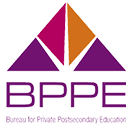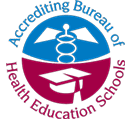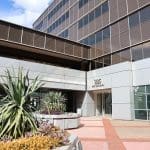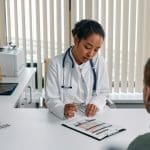Emergency management, emergency preparedness, and disaster services are common
throughout the United States—we take care of each other. By whatever name, these
activities encompass mitigation, preparedness, response, and recovery related to any
kind of disaster, whether natural, technological, or national security. Emergency
preparedness means being prepared for all kinds of emergencies, able to respond in time
of crisis to save lives and property.
Risk Assessment (Haik Antonyan)
Risk mitigation is the planning and allocation of resources to reduce human and
property loss. Decision is made by Haik Antonyan – the person in charge on how to
mitigate the risks.
Risks to consider include:
- Community Health
- SARS (Severe Acute Respiratory Syndrome)
- Influenza A, Pandemic
- TB
- Hurricane
- Tornado
- Flood
- Lightning
- Wind damage
- Solar Storms
- Terrorist attack
- Arson, bombing, sabotage
Evacuation (Gloria Assatrian)
- Direct all students and personnel to designated exits
- Listen to building emergency announcements
- Contact emergency response services (based on assessment results)
- Ensure that premises are cleared from all students and personnel
- Person in charge to lead everyone to their designated meeting place outside of the premise
- Check the presents of all students and staff upon arrival of designated meeting place
Emergency Procedures
In case of any criminal action or emergency, the staff as well as students are
immediately informed via building intercom with loudspeakers strategically placed in all
accessible areas of the building.
An emergency is to be reported to any staff member or the front desk immediately. In
the case of a fire, all students are to evacuate the building as calmly and orderly as
possible since this will be the fastest way to get out of the building. In case of an
earthquake, students and staff are to take shelter under a desk or a table until it is safe
to exit the building.
AMSC College will, without delay and taking into account the safety of the students and
faculty, will initiate notification system and, If the threat or an emergency is significantly
larger in scale, the information is immediately disseminated to local PD as well as Fire
departments via phone call or email.
On an annual basis, the building, where AMSC College is located, conducts annual
announced and unannounced emergence drills, which in turn, notified to all tenants of
the building and requires the tenant’s mandatory participation. The dates of these testes
are announced via email as well as phone calls to all building tenants as well as the
AMSC administration. The building management documents the description of all test
results, dates and times for compliance purposes, whether it was announced or
unannounced drill.
For the purposes of the Clery Act regulations, as well as the HEA fire safety and
missing student notifications regulations, AMSC college has no control over the property
as well as the location of the facility it is operating from. Also, AMSC College does not
offer it’s students any on-campus as well as off-campus housing.
Here are the steps we take to make sure our students and staff are safe before, during
and after an emergency or natural disaster. These plans are important for our safety in
both natural disasters and man-made disasters. Examples of natural disasters are
floods, blizzards, tornadoes and earthquakes. Man-made disasters can include
explosions, fires, chemical and biological attacks.
According to a recent poll, 96 percent of Americans feel it is important to prepare for
emergencies, but less than 20 percent describe themselves as totally prepared.
Lockdown (if the danger is a threat to students on campus)
Since AMSC College is co-located with 24 other tenants in the building, the campus
security is administered by two unarmed security guards in accordance with the law.
The building Management is in charge of the building security with two unarmed
security officers constantly on site during the regular business hours.
Throughout the school year, AMSC College as well as all building tenants along with the
building administration have practice drills so that building tenants as well as students
and staff become familiar with the emergency procedures. By knowing the lockdown
procedures and taking the practice drills seriously you can keep yourself and others
safe.
Faculty & staff should do the following if a lockdown is ordered:
Lock all doors and windows immediately. If a door can’t be locked, attempt to quickly
block the door with heavy items.
• Never open doors or windows unless ordered to do so by a safety or school
official.
• Always ask for documentation from an official to confirm their identity.
• Turn off all lights and close the blinds or curtains.
• Instruct all students to stay low and away from the windows and doors.
• Keep students inside of the classroom.
• Silence televisions, cell phones and other electronics.
• Clear hallways, bathrooms and any area or room that cannot be thoroughly
secured.
• Account for every student in the room.
• Assist those with special needs.
• Remain indoors and under lockdown until you receive an “all clear” from
authorized personnel.
Students should abide by the following rules during a school lockdown:
• Alert a faculty member or staff if you see something unusual
• Remain quiet, still, calm and alert.
• Follow all instructions.
• Only use cellular devices if it is an emergency or if instructed to do so.
Communications (means of communicating with staff, students, and family
members during, and immediately post, incident) (Haik Antonyan)
• The person in charge must be communicated if not available immediately
• Senior management must be notified
• Designated person is to contact (via phone call or texting) to all impacted
persons
Media (designated persons who may address the media and what information will
be released) (Haik Antonyan)
• The person in charge must be the point of contact with media and law
enforcement agencies.
Training method and timeframe for orienting staff and students (Gloria Assatrian)
Students will work together to learn basic emergency skills and how to react when faced
with fires, floods, hurricanes, tornadoes, lightning, wind damage, solar storms,
explosions, arson, bombing, sabotage, terrorism attacks, and other emergency situations.
As a best practice, faculty, staff and students should have full access to academic
continuity plans and should have the right to provide input via email or in person. AMSC
Plan is posted publicly on our website, however, students can also have their input into
the plan. It is shared widely to ensure broad participation and understanding before an
incident occurs. Training could include table top exercises as well as other emergency
simulations to help build capacity for responsiveness.
Instructional Continuity Plan
The increase in the number and intensity of crises and emergencies across the state –
both natural and man-made – has underscored the importance of emergency
preparedness. Our campus has been fortunate and never experienced any major wildfires
and related air quality emergencies, however, given the California crises and
emergencies every year, which could put significant impact on students, faculty, staff and
surrounding communities, we have emphasized the importance of academic continuity
plan. Our collective response to the COVID-19 pandemic has provided an opportunity for
expanding our shared expertise and developing strong procedures for building more
formalized academic continuity plans. This proactive approach during COVID-19 helped
our campus capture and build lessons learned and prepare for the next disruption or
disaster. Since COVID-19, we have moved to hybrid learning mode and are currently
running all our classes with 65% online mode. This allowed our students to adapt to an
online learning environment. As to in person 35% laboratory class disruption is
concerned, In times of crisis, the instructional continuity will be ensured by transitioning
the students from in person to temporary full online learning mode, to ensure the
instructional continuity. Disruptions to academic continuity may include a wide range of
challenges such as: operational issues that limit building and/or technology access; health
emergencies that impede in-person instruction; local disasters that threaten the health
and safety of campus community members. The decision for the business continuity,
which drives the decision making to ensure the best possible choices are being made to
protect students, faculty, staff and AMSC property, as well as to enable the earliest
possible return to normal operations is given to the campus director or associate director.
Academic continuity is an important component of AMSC College’ planning and plays a
critically important role in helping us maintain the core function of academic instruction
during and after emergencies.
Community Preparedness
The following Health rules are followed within the College: All students are required to
follow CDC guideline for infection control regarding hand washing and standard
precautions for prevention and control of disease. Each classroom is supplied with hand
sanitizer for use by students and staff. CDC Standard Precautions for hand washing: The
hand washing guideline posted in each classroom provides overview of hand washing
and hand antisepsis in health-care settings and specific recommendations to promote
improved hand-hygiene practices and reduce transmission of pathogenic microorganisms
to patients and personnel in health-care settings.
When an emergency occurs, it affects every person of AMSC in the immediate area,
creating the responsibility to respond first, as an individual; second, as a member of an
AMSC family and community overall. This emergency preparedness plan is a guide for
AMSC students conducting any type of emergency services or being prepared for
emergency situations.
It is a challenge to be prepared for emergencies in our world of man-made and natural
phenomena. This Emergency Preparedness plan is designed to meet these challenges
so that the staff and students can be more effective in critical situations.
Students will work together to learn basic emergency skills and how to react when faced
with fires, floods, hurricanes, tornadoes, lightning, wind damage, solar storms,
explosions, arson, bombing, sabotage, terrorism attacks, and other emergency situations.
Individual Preparedness
• Coronavirus (Covid-19) related guidelines
• Avoid contact with sick people.
• Avoid touching your eyes, nose, or mouth with unwashed hands.
• Clean your hands often by washing them with soap and water for at least 20
seconds or using an alcohol-based hand sanitizer that contains at least 60%–95%
alcohol. Soap and water should be used if hands are visibly dirty.
• It is especially important to clean hands after going to the bathroom; before eating;
and after coughing, sneezing or blowing your nose.
• Supplies of hand sanitizer, tissues, and other hygiene products may be limited, so
consider bringing them with you.
• Avoid traveling if you are sick.
If you spent time abroad during the past 14 days:
• Stay home for 14 days from the time you have traveled and practice social
distancing.
• If you get sick with fever, cough, or have trouble breathing seek medical care and
call ahead before you go to a doctor’s office or emergency room.
• Do not travel while sick.
• When coughing or sneezing cover your mouth and nose with a tissue or your
sleeve (not your hands).
• Do not come to college if you any of these syndromes: have a fever, get sick with
fever, cough, or have trouble breathing.
Hazard Identification: First Steps
A first order of business for the assessment team is to consider the list of potential
hazards and begin to identify those that pose the greatest risk to the college. In the case
of natural disasters, it may be fairly easy to determine those that are of greatest concern.
Other hazard categories, however, may take some research and analysis to uncover.
It is likely that the community in which the college or university is located has conducted
a hazards assessment that could be helpful to this effort. Talk to emergency management
or public safety agencies in the community to find out what has been done in identifying
potential hazards. A community-based hazards assessment likely will have considered
many of the same hazards that a college or university is concerned with, including natural
disasters, community facilities and plants, hazardous materials from industrial and
chemical accidents, and susceptibility to terrorism. After identifying a list of hazards, it is
helpful to develop hazard profiles. For each type of hazard, answer the related profile
questions:
• Frequency of occurrence – How often is it likely to occur?
• Magnitude and potential intensity – How bad could it get?
• Location – Where is it likely to strike?
• Probable geographical extent – How large of an area will be affected?
• Duration – How long could it last?
• Seasonal pattern – What time of year is it more likely to occur?
• Speed of onset – How fast will it occur?
• Availability of warnings – Does a warning system exist and how much warning
time will there be?
After completing hazard profiles, a prioritization analysis can be created using a
risk matrix. A risk matrix is used to rate probability and severity on a scale of low,
medium, or high. Obviously, hazards with high probability and high severity are at the top of the priorities list, and those with low probability and low severity are at
the bottom. The hard part may be prioritizing hazards that get medium ratings or
those that are high probability-low severity or low probability-high severity. Once
an institution has determined which hazards are at the top of the list as well as those
that fall in descending order following those at the top, it can prioritize planning,
training, and drill efforts to focus on the hazards most likely to occur and most likely
to cause significant repercussions to the campus.
• Assess Vulnerabilities and Response Capabilities
The next task for the team is an assessment of vulnerabilities and response
capabilities. This entails determining the characteristics of the campus setting that
contribute to susceptibility to hazards and the ability of the institution to respond to an
event. As discussed previously (see p. 30), a vulnerability assessment identifies areas of
weakness that could result in undesirable consequences for the campus or
community. For colleges and universities, these areas of weakness could include
particular aspects of an institution’s structure, procedures, equipment, systems, grounds,
and surroundings. As noted earlier, many campuses have open access to
buildings and grounds, which increases vulnerability. Some vulnerabilities can be
identified through an inspection of buildings and grounds:
• Structural hazards
Refer to actual structural issues within the building, such as weak roofs or trusses,
building susceptibility to high winds or floods, unreinforced masonry, and unsecured or
unsafe windows.
• Maintenance-related hazards
Could include unstable bookshelves, exposed
wiring, wet floors, unsafe practices in science labs or with chemical elements,
exposure to asbestos, unsecured appliances and vending machines, malfunction
of heating and ventilation systems, blocked exits, and general fire hazards.
• Grounds hazards
Include such issues as unsafe landscaping, poorly maintained
outdoor equipment, exposed electrical wires or gas lines, exposed nails, or
unsecured storage structures.
• Identifying Prevention, Mitigation, and Preparation Action Items
From the tasks performed by the assessment team, a list of action items should be
compiled. These action items could include the following:
• Install access controls for selected buildings and campus areas;
• Make structural improvements to buildings;
• Conduct maintenance projects, such as securing bookshelves and display cases to
walls and securing lab equipment;
• Make improvements in landscaping, such as removing objects that might impair
visibility through windows to the outside;
• Install systems for communicating with students and others on campus to notify
them of an emergency;
• Enhance radio systems to ensure interoperability with local law enforcement;
• Improve security technology, such as security cameras, access control, and alarm
systems; and
• Update structural design as applied to new construction or the retrofitting of
existing structures.







